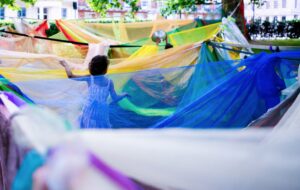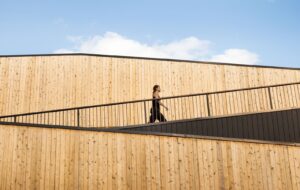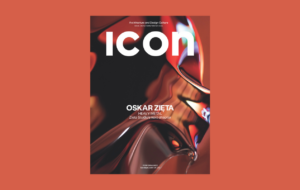|
Studio Swine’s latest collection uses an abundant renewable material that they discovered in the markets of Shangdong, China: human hair Alexander Groves knows some amazing facts about hair. The designer, who forms Studio Swine with partner Azusa Murakami, says that Asian hair grows 16 times faster than a tropical hardwood such as mahogany. Its shape and strength are different to Western hair, which grows at a rate of 10mm a month compared with Asian hair’s 13mm. A single strand can take 100g and with an average 120,000 hairs per head, that means a single person has the means to carry 12 tonnes – the weight of two elephants. The facts are the foundation for Hair Highway, a project that has seen the pair travel to the heart of the natural hair extension market in Shangdong, China, for their unique research. “China is the biggest importer of tropical hardwoods, these trees which take over 300 years to mature,” says Groves. “But it’s also the biggest exporter of hair.” With large parts of Africa and Latin America being deforested to meet China’s hardwood demands, Hair Highway asks if its own abundant and renewable resource might be exploited for uses other than the beauty market, forming a material with a new luxurious identity in design. Created for Pearl Lam Galleries and shown at Design Miami/Basel earlier this year, the pieces range from small combs, vanity items and vases to a grand dressing table on steel legs, its perfect circular shape resembling a powder compact. For each object, strands of “gradient” hair are set in coloured natural resin to make small planks. “We treat it like it’s wood, switching around light and dark panels to make chevron patterns.” Geometric forms in amber and deep red relate to Shanghai deco, a take on the French deco style of the 1930s. Traditional decorative methods emanate antiquity and glamour, but the use is subverted by Studio Swine’s unconventional material; a closer look invites both amazement and disgust. The use of deco also nods to China’s Silk Road, the ancient route that transported not only silk, but religion, aesthetics and philosophy between east and west. For their project, Groves and Murakami spent five months in a Shangdong town with a life that revolves around the hair industry. “When we arrived there was a huge market. Men were arriving on motorbikes with things like rabbit skins hanging off the handles,” says Groves. “They brought sacks of hair from women in the surrounding villages. It was all quite Mad Max.” The sacks unfurled to reveal masses of pony-tailed tresses: pure white from elderly ladies and soft, jet-black hair, all the more sought after if it is untreated. With filmmaker Juriaan Booij, they documented stitching, pressing and wig-making: all the processes that manipulate raw product into real commodity. “We always make a film alongside the products,” says Groves. “In this case we knew we wanted tell the story of the road. Rural roads ending up in the big city, and then out to the world through international shipping.” All of Studio Swine’s projects consider the impact of design at the global scale. Intrepid in their approach to alternative sustainability, after graduation they embedded themselves in São Paulo’s community of catadores, informal waste collectors who pick up aluminium cans and collect payment for recycling. The project, Can City, involved building a mobile furnace with which to rove the streets, melting metal and sand casting it into furniture for local cafes. Green glass bottles were turned into lightbulbs for a further exercise: the São Paulo Collection for local gallery Coletivo Amor de Madre. And the adventures keep coming. This October, Studio Swine will board a 72ft clipper bound for the Azores in search of sea-borne plastic to mould into furniture. A continuation of the 2012 project Sea Chair, the next phase will involve scooping the ocean’s gyres and transforming plastic using a bespoke solar-powered machine. “We’re always interested in places, materials and resources,” says Groves. “Design can have a profound influence on landscapes round the world, something you hardly think about when choosing a kitchen worktop or whatever. We love materials like hardwoods and tortoiseshell too. But beauty isn’t just what you see but what you know.” |
Words Riya Patel |
|
|

















